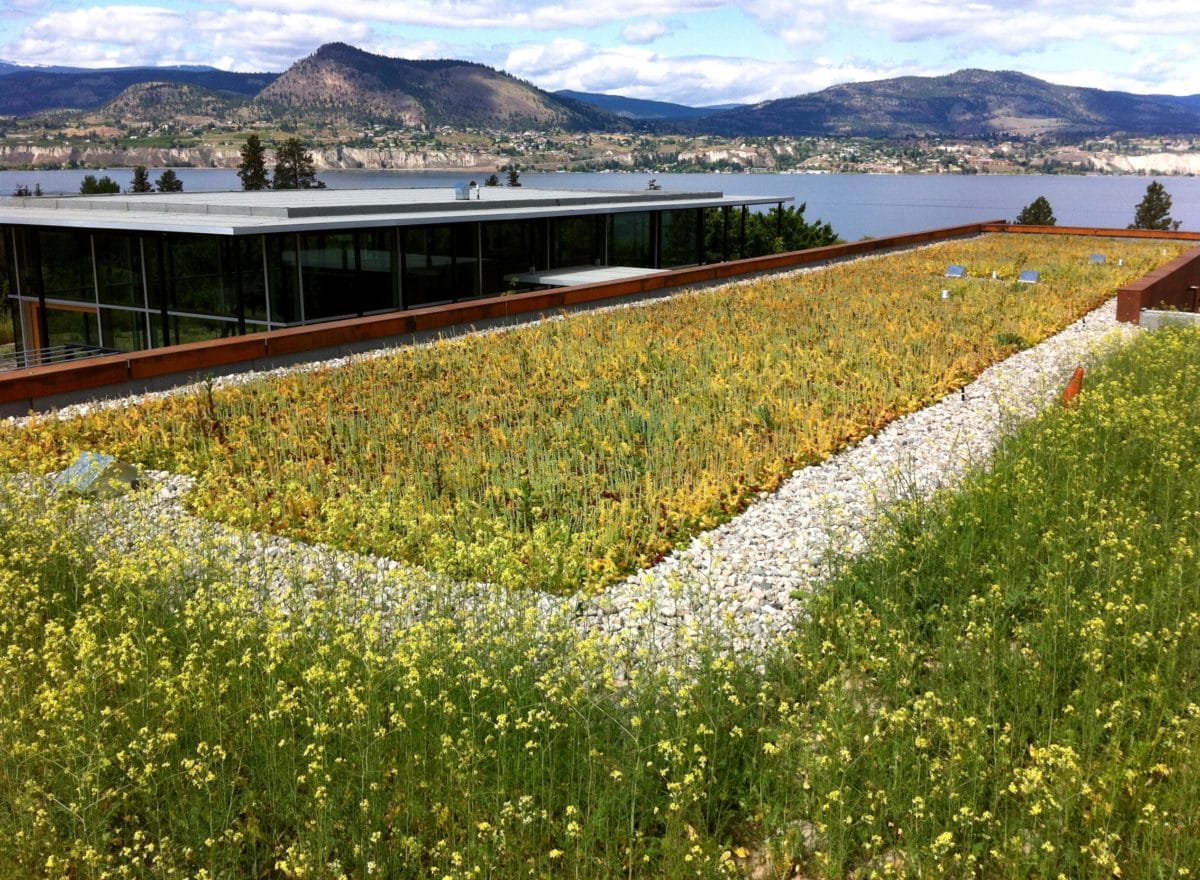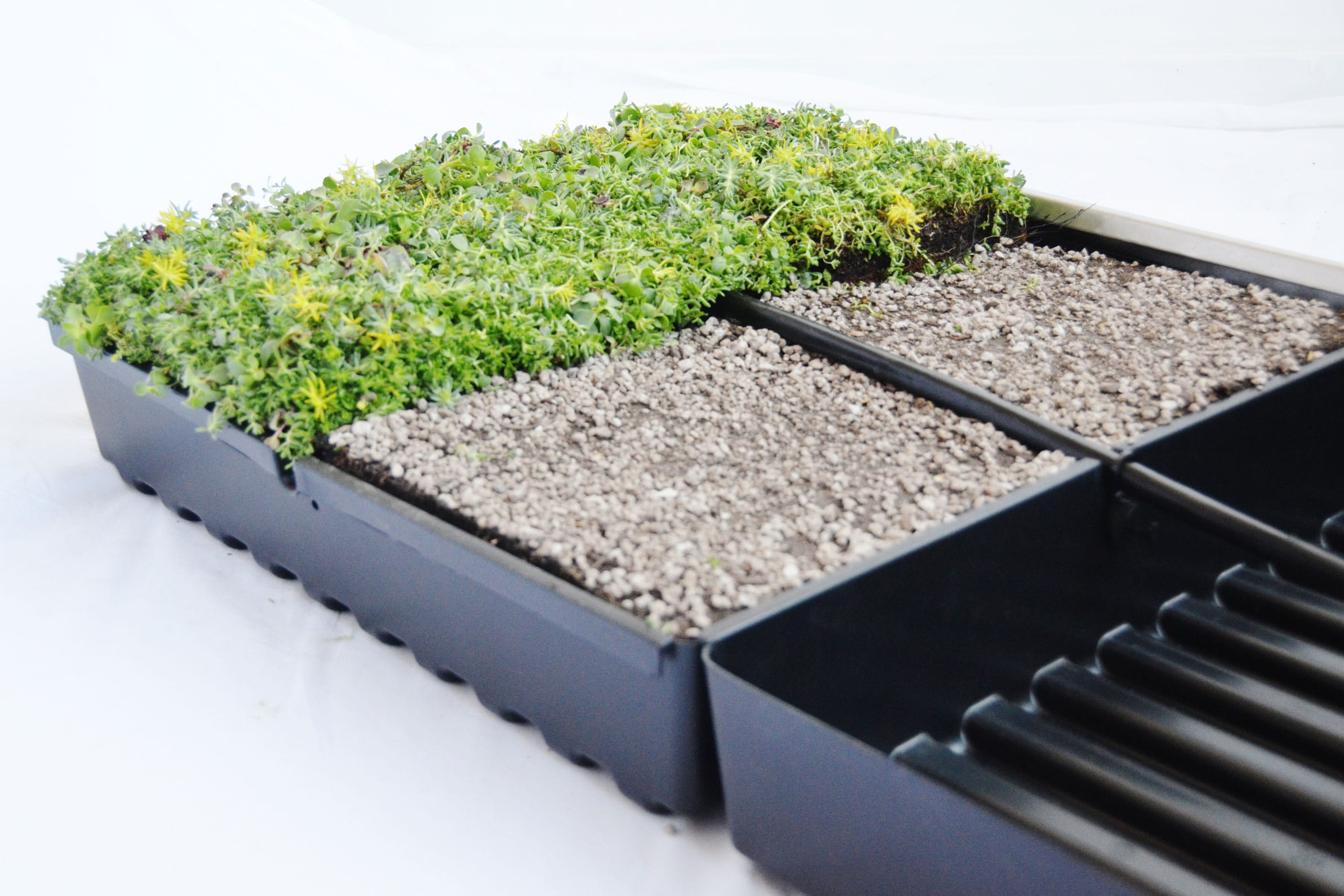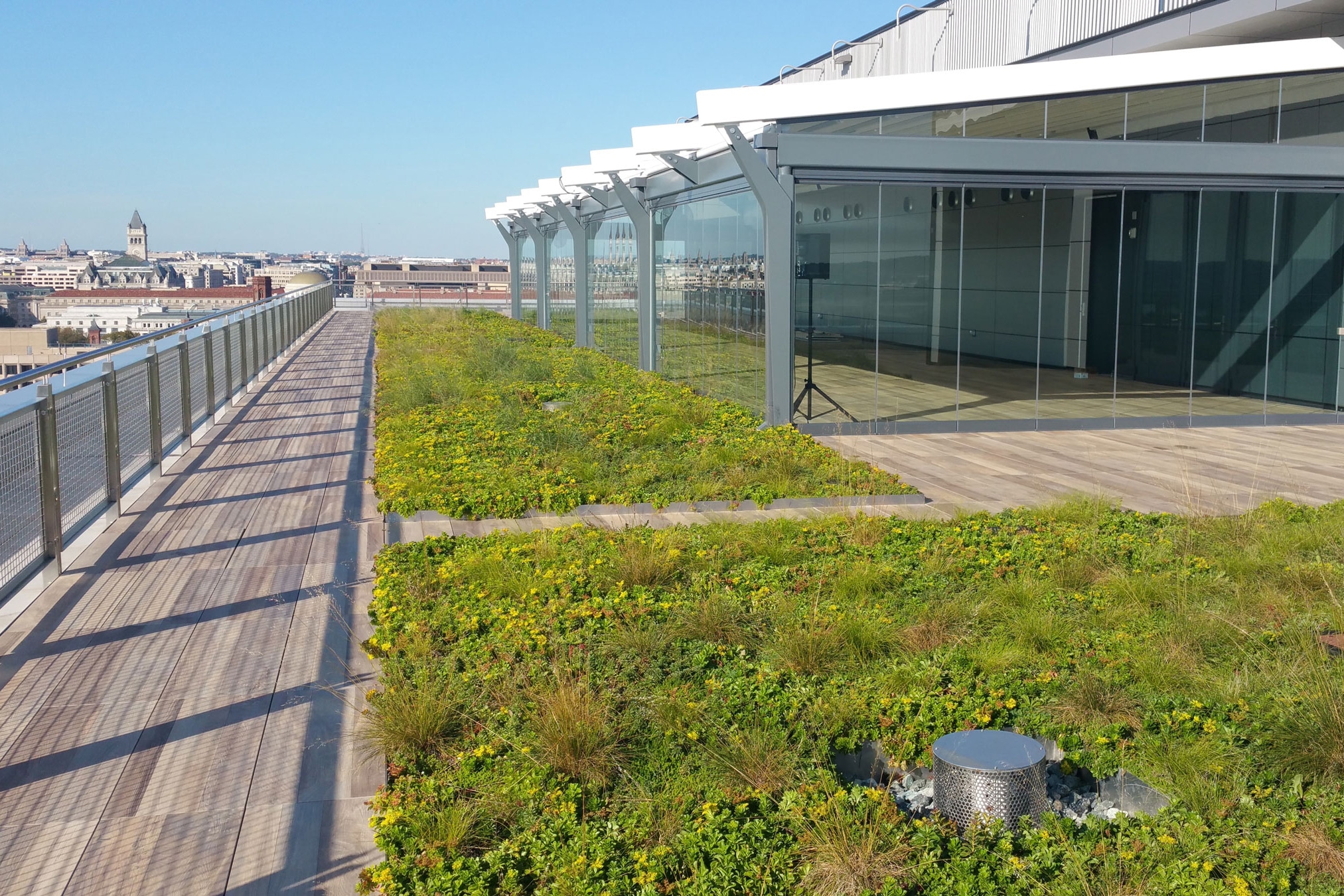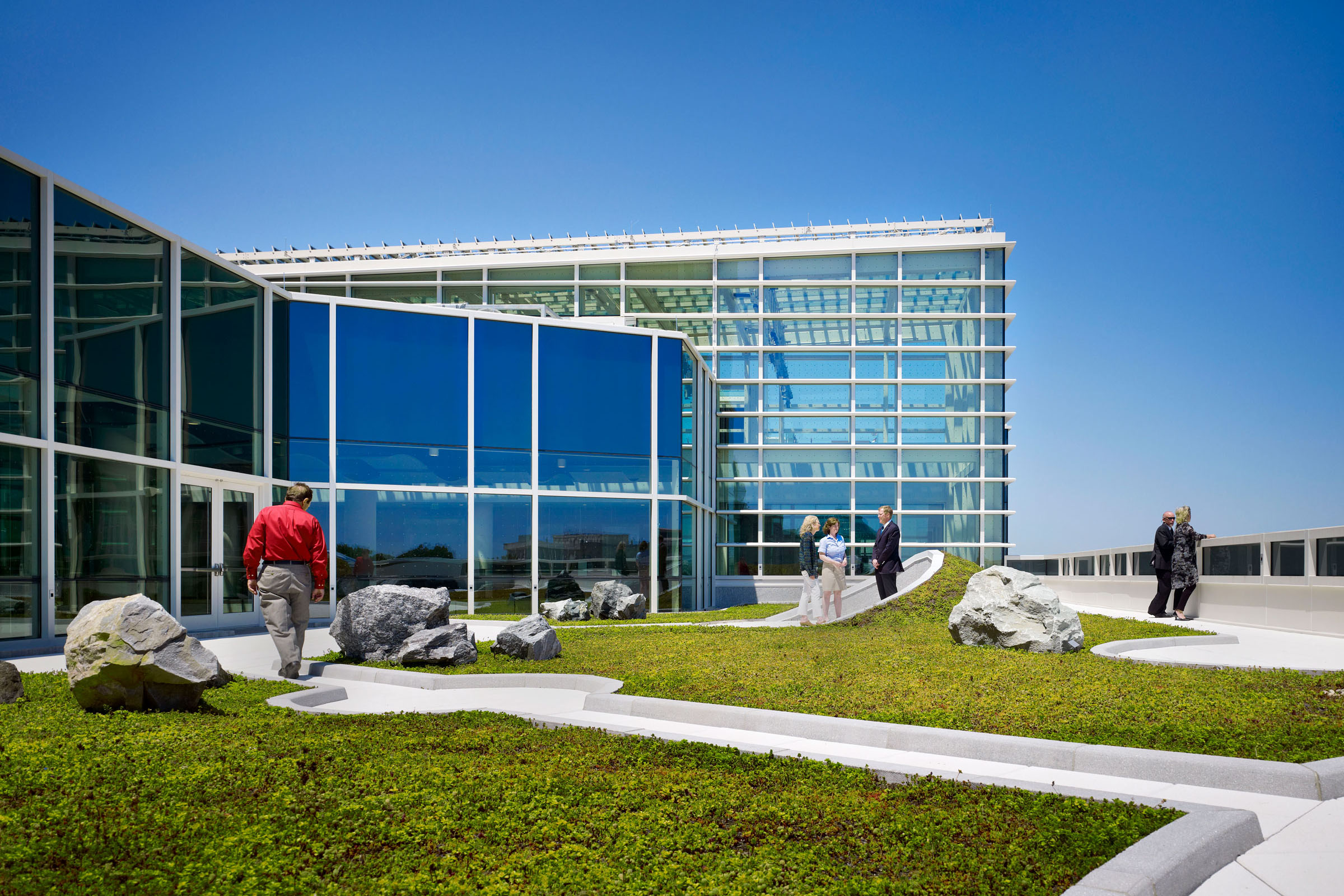Story at a glance:
- The green roof industry is growing, as the market is expected to reach $4.2 billion by 2027.
- The best plants for green roofs depends in part on where you live, but sedum is well suited for drought-prone areas.
- Typical plants grown in a green roof are a combination of succulents and low growing bushes and trees.
By now most people know you need more green roof materials than simple grass to design a high-performing green roof. But with green roof projects on the rise, it can be hard to know where to begin.
The green roof market is projected to grow at a compound annual growth rate of 17% from 2020 to 2027, and the market is projected to reach $4.2 billion by 2027, according to Grand View Research.
Considering the growing industry, more and more manufacturers are getting in the game with green roof materials that range from plant trays to waterproofing systems. So what do you need to design the perfect green roof? We’ve compiled a list of green roof materials for you to consider before your next project.
1. Plants

Green roof by Architek. Photo courtesy of Architek / Brett Ryan Studios
Of course this list starts with plants. Be sure your plant selection is suited for your location. According to the experts at Architek, you should reference your location on a Regional Hardiness Zone map before making your choices.
Most regions in North America are divided into unique horticultural hardiness zones. These maps rank areas from 1 to 7, 1 being the harshest growing conditions, 7 being the mildest.
Using plant species that are native to the area gives your green roof the best rate of success. In general, the most popular plant species for green roofs is the succulent sedum, which is well-suited for shallow roof systems. Sedum is also tolerant of harsh conditions like droughts.
Common plants grown in a green roof are a combination of succulents and low growing bushes and trees.
2. Plant Trays

Plant trays from Archatrak. Photo courtesy of Archatrak
If you’re considering a modular plant tray system, you eliminate the need for other materials like drainage mats, water retention mats, root barriers, and filter fabric—all necessary components of growing plants directly on a rooftop.
With a tray system, you have the option of “pre-grown,” where the trays are supplied already filled with growing medium and planted with species like sedums; or “planted-in-place,” where empty trays are laid on the rooftop and then filled with growing medium and plants, according to Malcolm Kay of Archatrak.
Pre-grown tray systems typically require a green roof’s design to be planned in advance and must be installed immediately upon arrival onsite. With planted-in-place tray systems you can install the green roof in phases, as empty plant trays and sacks of growing media are shipped to site and rolls of sedum plantings are shipped separately, which offers more design flexibility.
3. Waterproofing Membranes

A green roof on Chicago’s City Hall. Photo courtesy of Sika Sarnafil
You can’t have an effective green roof if it leaks.
“The membrane is the primary waterproofing for the roof,” Jon Jensen of Sika Sarnafil told gb&d. “When using a thermoplastic single-ply membrane, the seams can be hot-air welded creating a watertight monolithic sheet. And the seams are good for the life of the system, unlike other systems that use glues to bond their seams. The sheet also acts as a natural root barrier eliminating the need to add another layer of protection.”
Having the proper waterproof membrane should also lead to a longer life for the green roof. Jensen points to products like Sika’s G476 waterproofing membrane as solutions. Sika Sarnafil installed its first green roof in 1969 in Switzerland.
GreenScapes® Green Roof Solutions also offers up options for waterproofing membranes, combining the proven performance of CETCO waterproofing systems with modern green roof technology and design. CETCO works with project teams to develop customized green roof solutions that are specific to project’s needs.
4. Proper Substrates

Photo courtesy of Architek / Brett Ryan Studios
The proper substrates and/or engineered growth media also make a big difference in green roofs.
“Using low-grade topsoil and inappropriate substrate is the leading factor for green roof failures and subsequent building envelope damage,” Ron Schwenger told gb&d in an article for Architek.
The certified green building principal at Vancouver-based Architek recommends using a grow media mix best suited for the horticultural environment and building architecture.
If you are dealing with a landlocked, arid environment, Schwenger says you need to mix grow media suited for water retention. On the other hand, green roofs in coastal, rainy environments should have grow media that are less absorbent, allowing for effective water drainage.
5. Drainage system

Photo courtesy of Archatrak
Drainage layers for extensive vegetative roofs may consist of plastic sheets, fabric or synthetic mats, or granular mineral layers, according to the National Institute of Building Sciences.
Beyond soil and plantings, modern green roofs can be designed using a variety or mix of drainage plates and mats. It’s through these layers, according to the Climate Action Business Association, that a soil profile is mimicked, thus creating a drainage process that allows liquid to be filtered through safely while also nourishing the plants.
Hyload also emphasizes that drainage can use a coarse granular material or a synthetic layer. According to their experts, granular drainage can be lightweight aggregate like lava rock, or expanded clay, slate, or shale.
For virtually any green roof material, you can also consider recycled materials. According to GreenSpec, many of the materials used in green roof construction are manufactured from recycled building materials, plastics, and rubber, thereby reducing landfill disposal.



